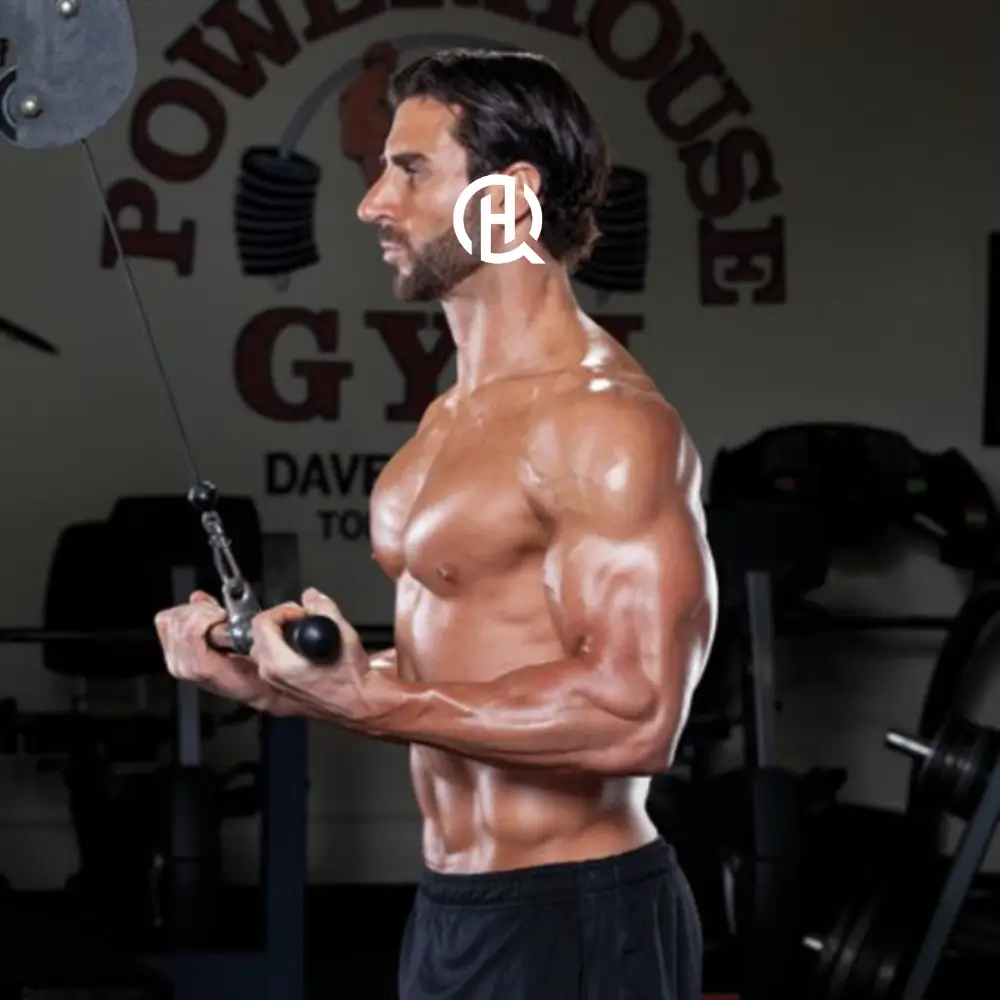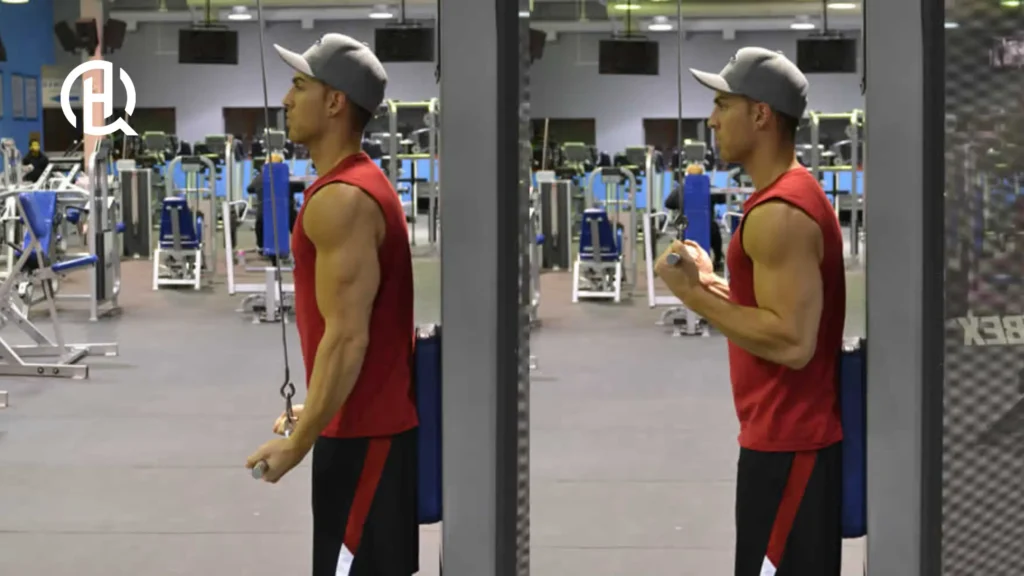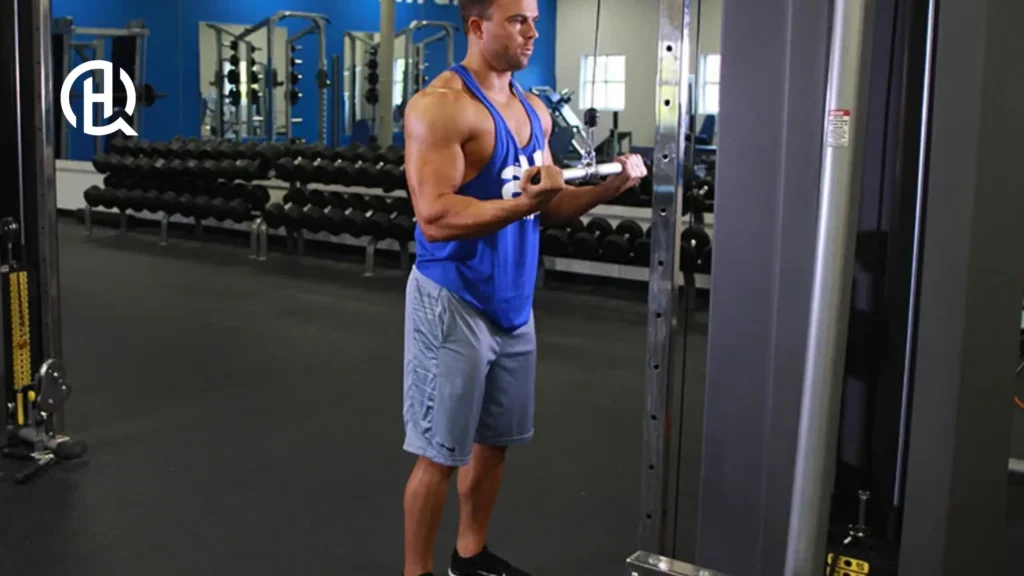

Want to get stronger, leaner, and take your fitness to the next level? Explore our workout programs now!
If you’re grinding out endless pushdowns and still not seeing the definition you want in your triceps, it might be time for a game-changing tweak, the reverse grip cable triceps extension.

Sure, It looks simple and feels just a bit awkward at first. But don’t be fooled: changing your grip from overhand to underhand can change up your triceps game particularly when it comes to targeting that elusive long head.


There are plenty of ways to perform a triceps pushdown, and even more grip attachments claiming to improve biomechanics. But one simple variable can make a noticeable difference: the choice between an overhand (pronated) and underhand (supinated) grip using a straight bar.
You may have heard that forearm rotation doesn’t affect triceps function — and that’s correct. The triceps insert on the ulna, not the radius, which means forearm position doesn’t directly change how the triceps contract.
But that doesn’t mean grip position is irrelevant.
The body works as an integrated system, and forearm position can influence joint alignment and movement patterns that affect how effectively the triceps are trained.
For example, when using an overhand grip during pushdowns, the limited range of forearm pronation can cause internal shoulder rotation. This often leads to elbows flaring outward, which reduces tension on the triceps and brings other muscles into play.
In contrast, an underhand grip naturally encourages better elbow positioning, helping you keep them tucked and aligned—leading to more consistent triceps activation.

The shoulder and elbow joints are part of a kinetic chain, meaning movement at one joint affects the other. When the shoulder internally rotates to accommodate an overhand grip, the elbow’s path often changes as well—typically flaring outward. This shift can reduce tension on the triceps, particularly limiting the long head’s involvement, which relies on a stable shoulder position for full engagement.
Your triceps muscle has three parts:
The lateral and medial heads of the triceps only act on the elbow joint, but the long head crosses both the elbow and shoulder joints, making it sensitive to your arm position relative to your torso.
To fully engage the long head, the upper arm should extend behind the body and stay close to the side. This positioning is difficult to achieve with a pronated (overhand) grip, as it often promotes internal shoulder rotation and elbow flaring.
This is where the underhand (supinated) grip shines.
Using a supinated grip naturally encourages elbows to stay tucked and allows for greater shoulder extension at the bottom of the pushdown. This subtle change improves alignment and increases tension on the long head.
The result?
A stronger contraction and better overall activation of all three triceps heads—especially the long head.

So, if muscle growth is your goal and you’re aiming to maximize peak tension, the reverse (underhand) grip can offer a more effective stimulus—especially for targeting the long head of the triceps with better alignment and control.
However, if your focus is on building pure strength, pushdowns—regardless of grip—shouldn’t be your main lift. Movements like the close-grip bench press, skullcrushers, and weighted dips are far more effective for developing raw triceps power and strength due to their heavier loading potential and compound nature.